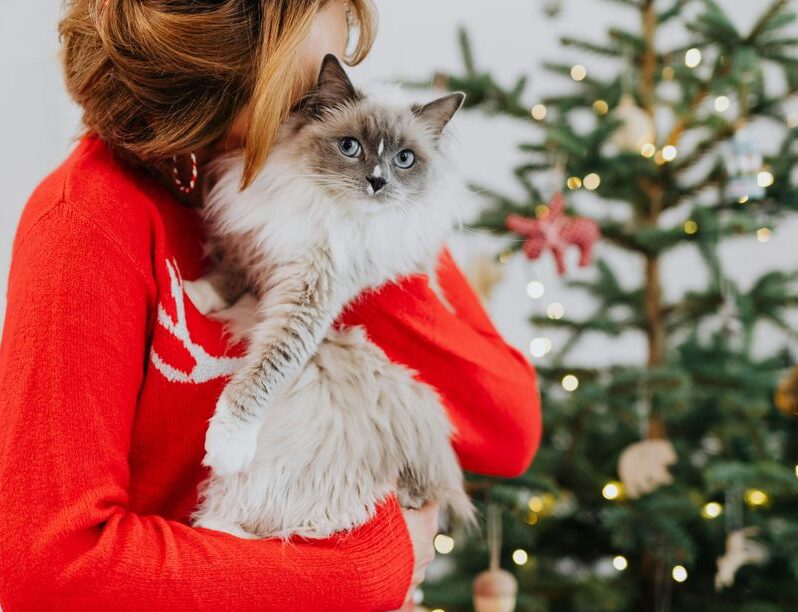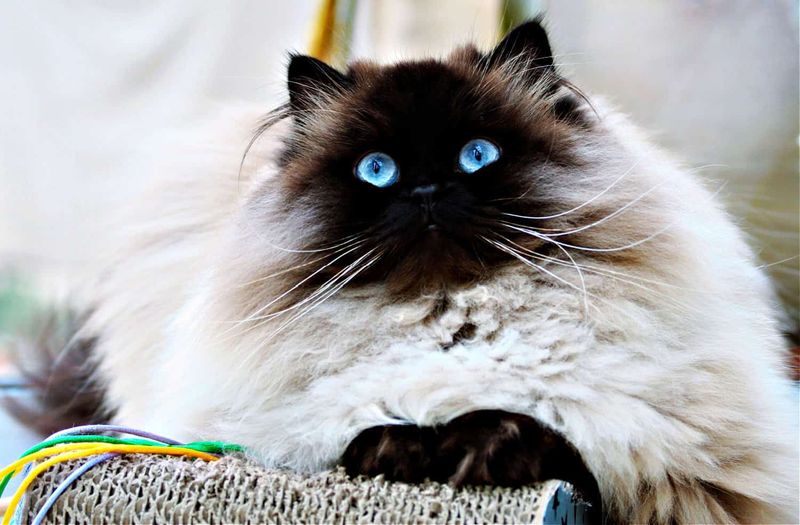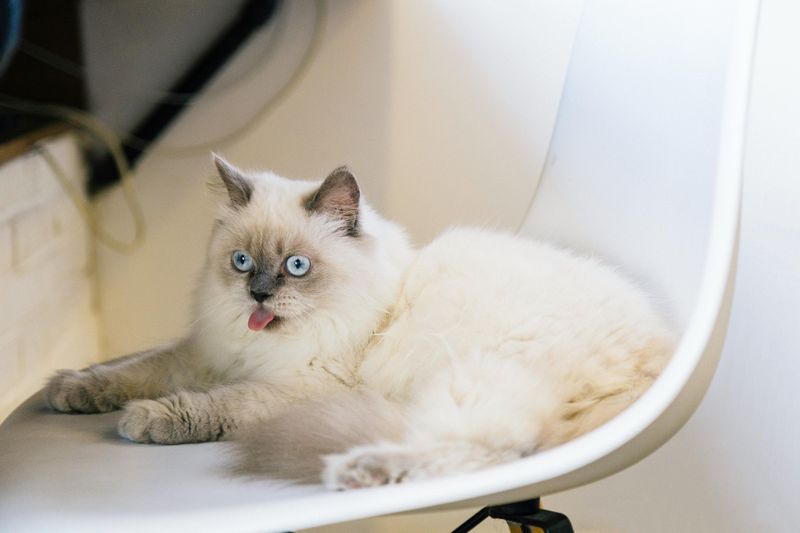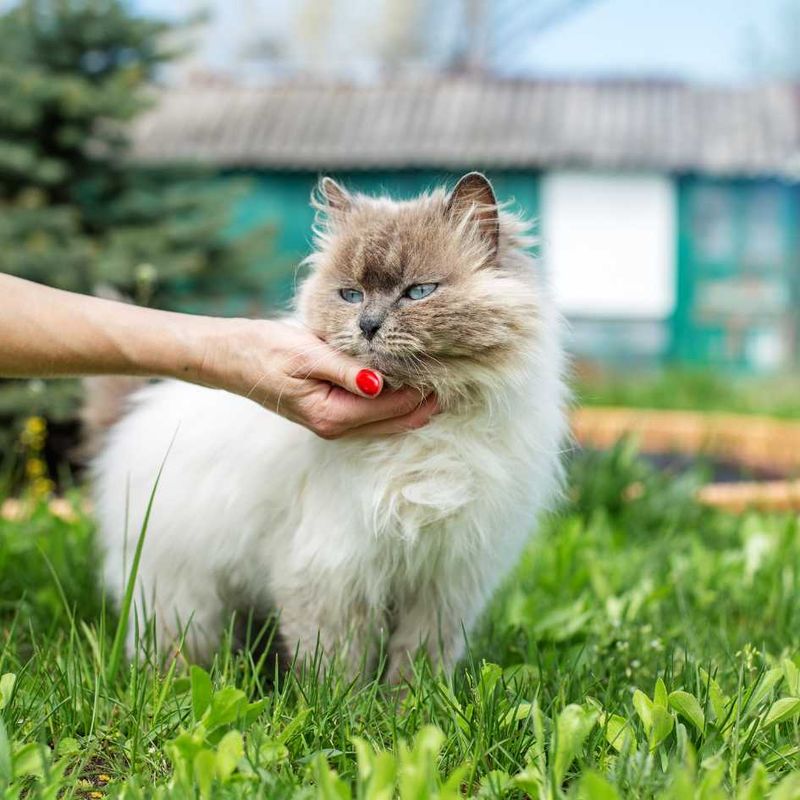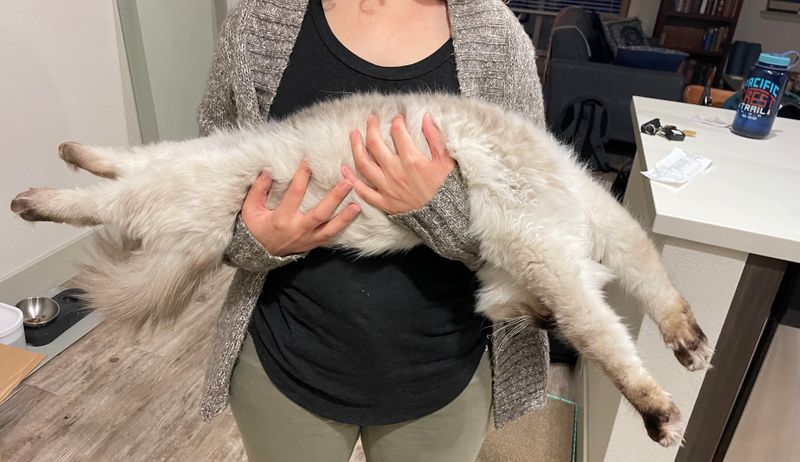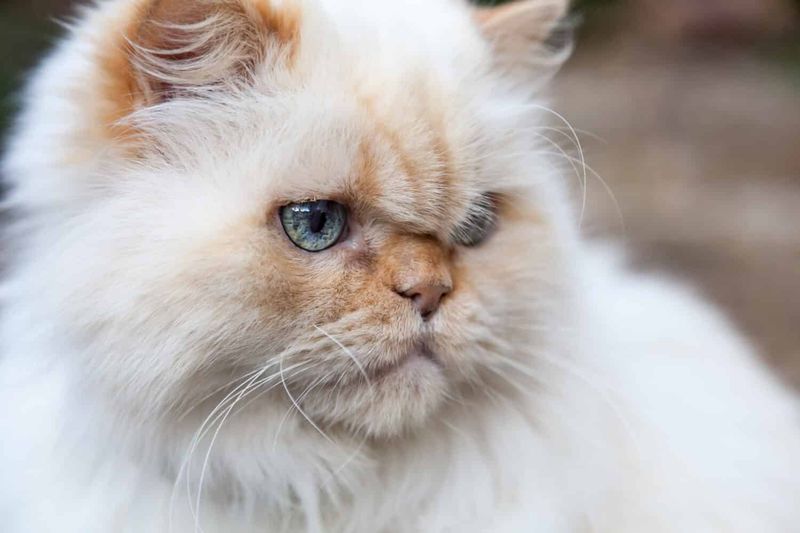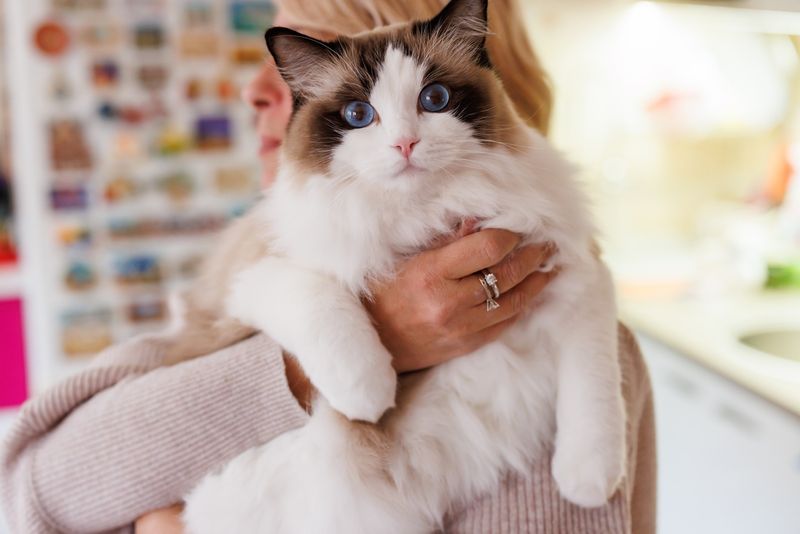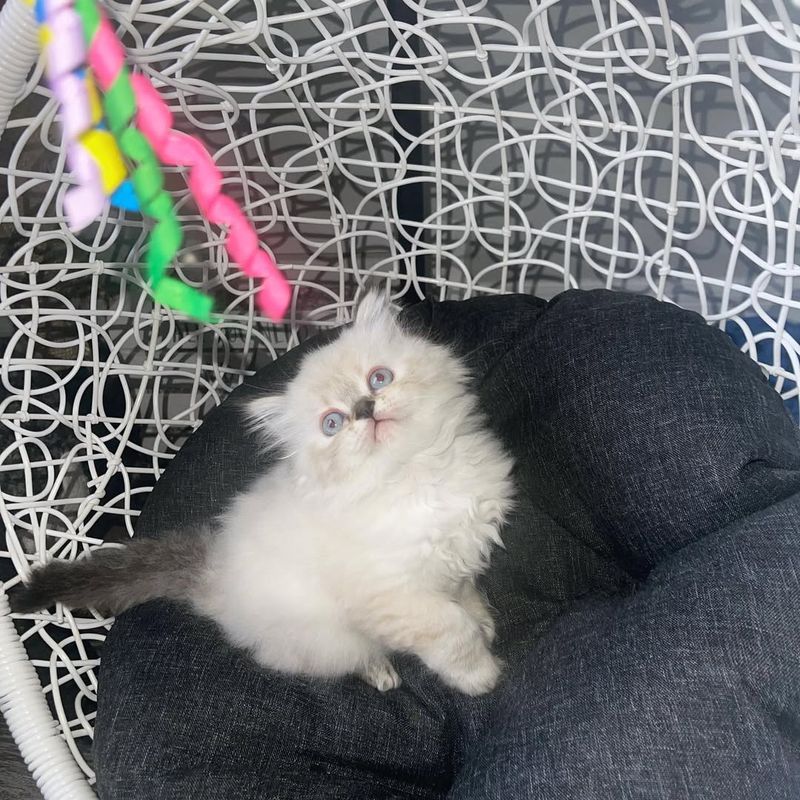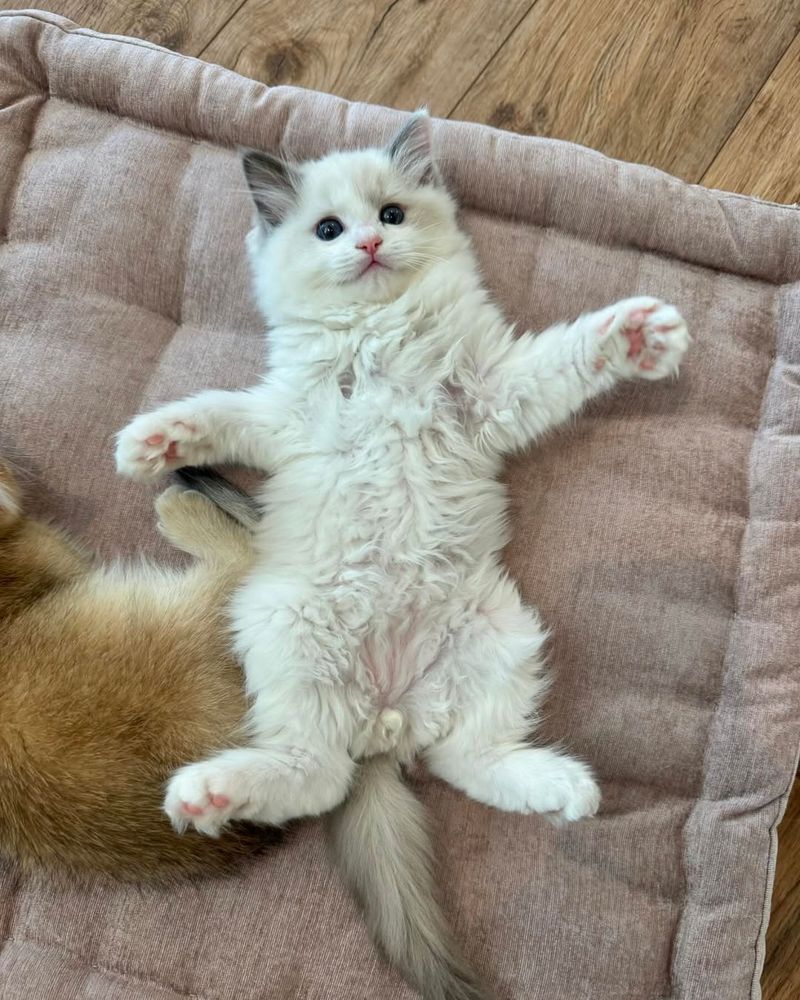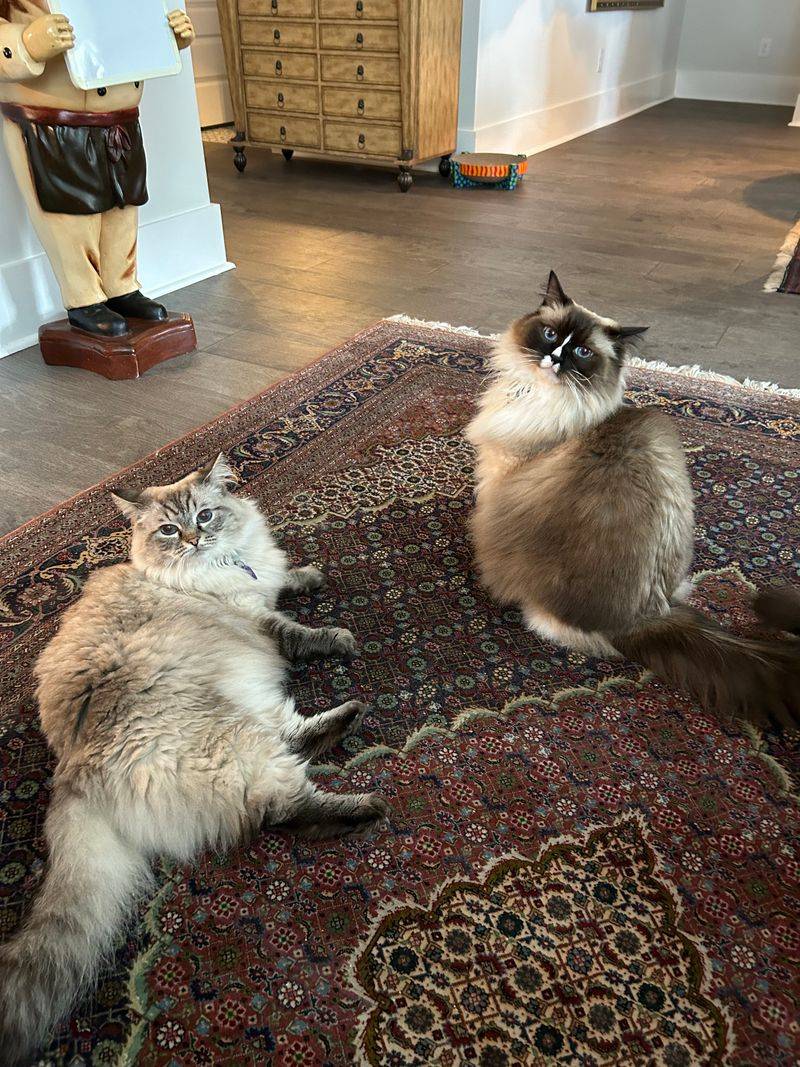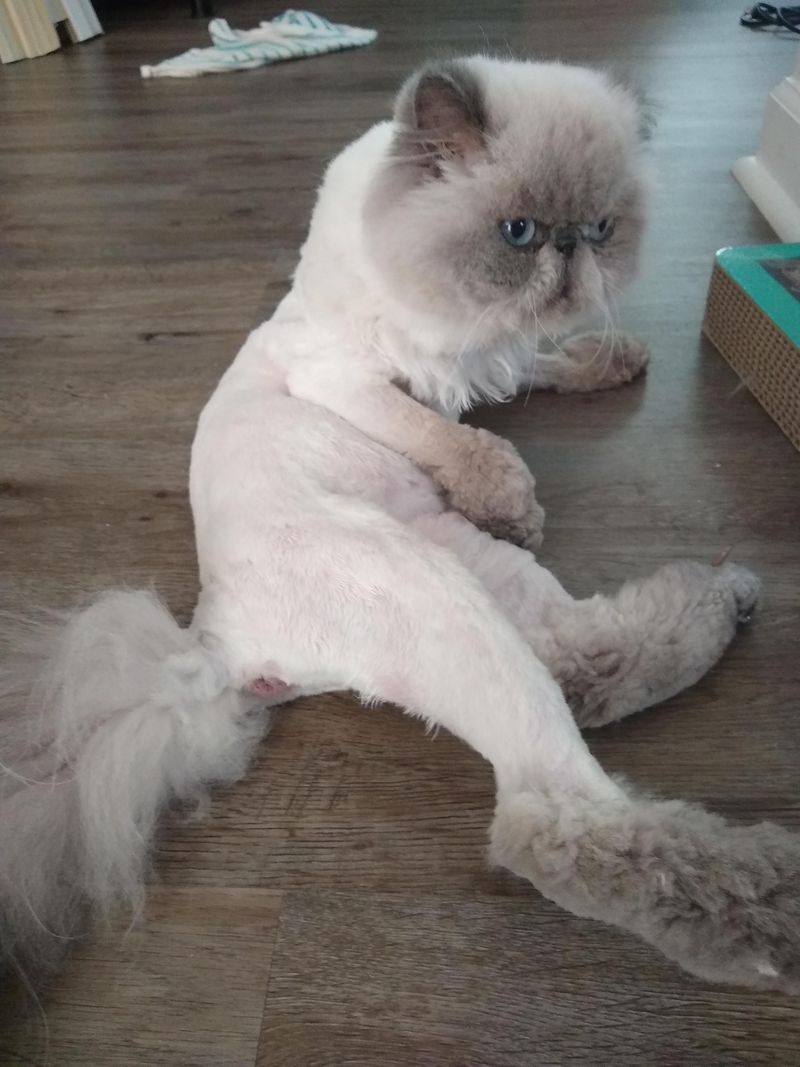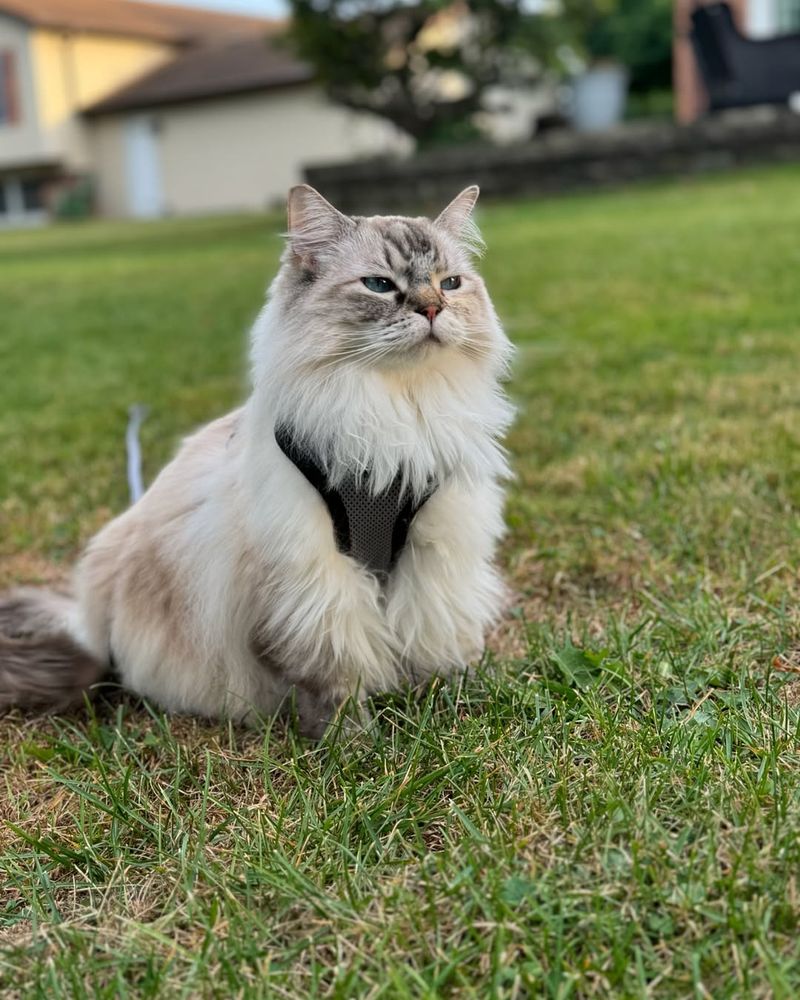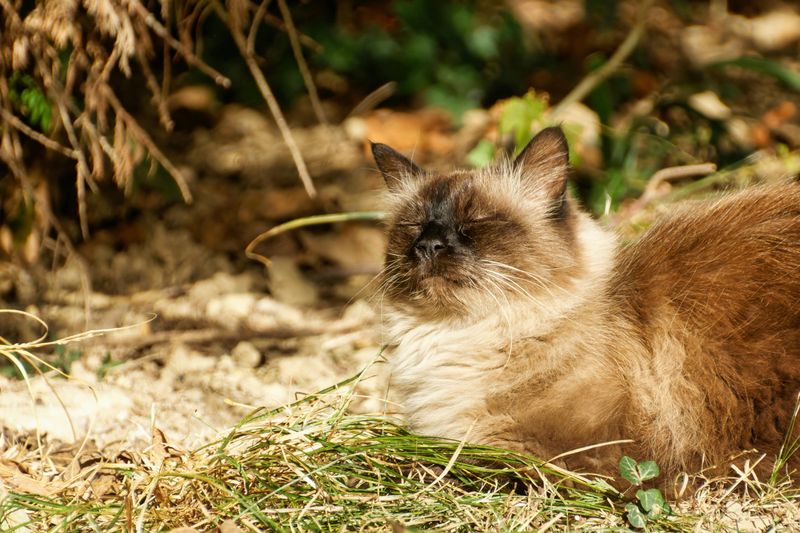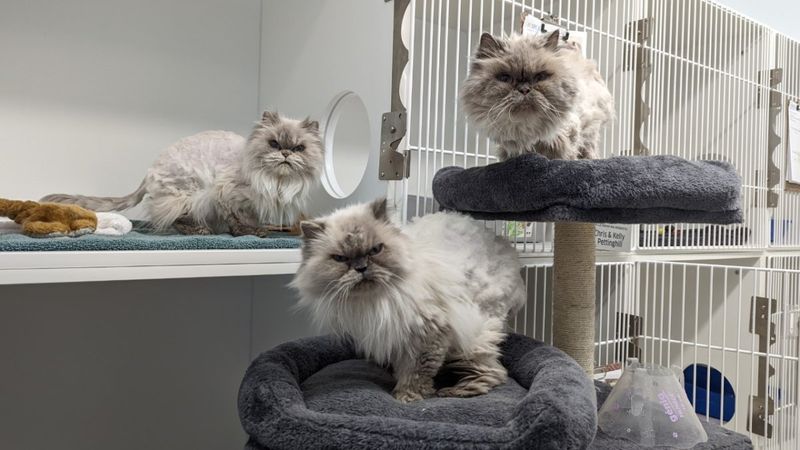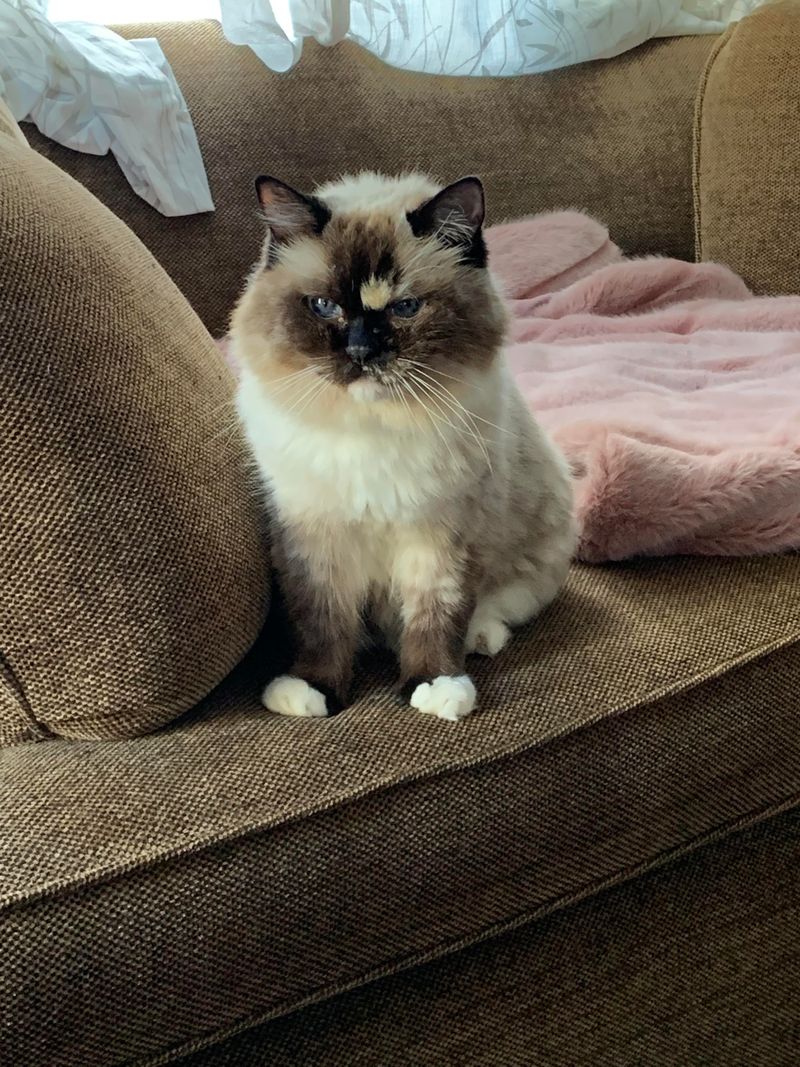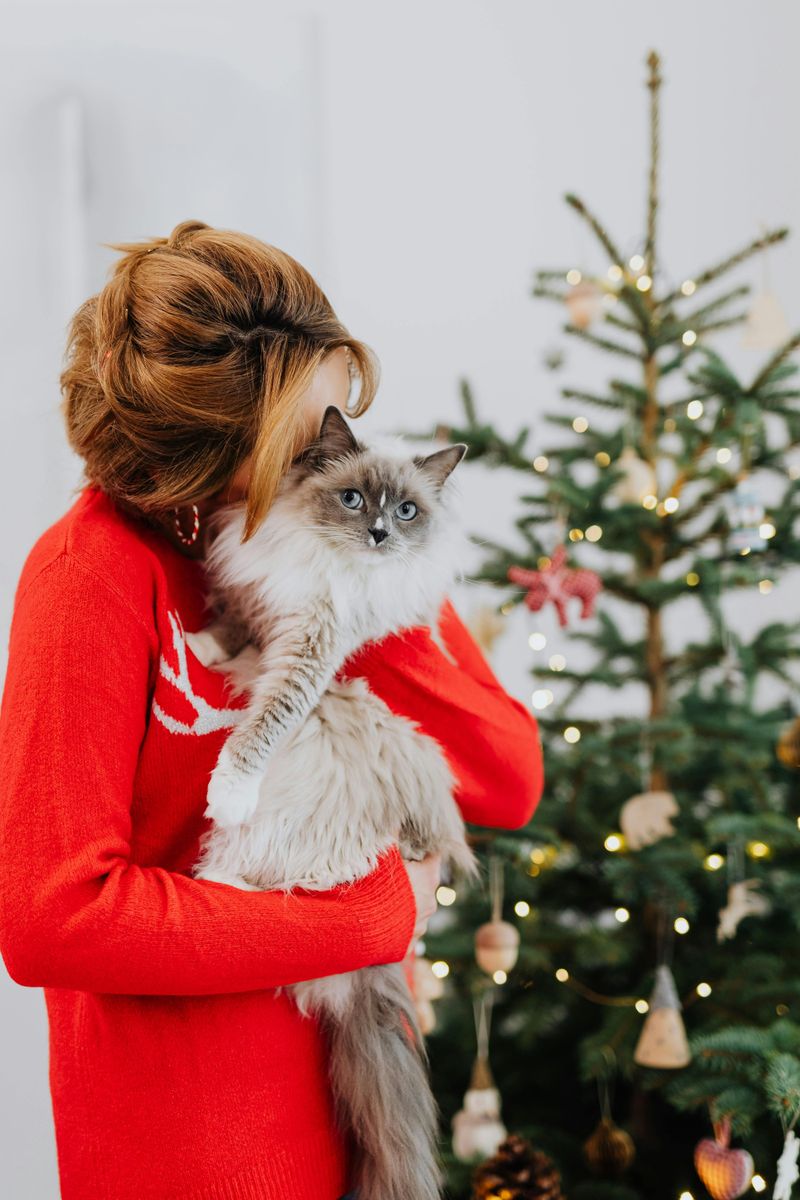📖 Table of Content:
- 1. Eye-Catching Eyes
- 2. Coat Colors & Patterns
- 3. Fur Texture & Fluffiness
- 4. Size & Weight
- 5. Personality & Temperament
- 6. Energy Levels & Playfulness
- 7. Vocalization & Chatty Nature
- 8. Bonding & Attachment
- 9. Friendliness
- 10. Grooming Needs & Maintenance
- 11. Intelligence & Trainability
- 12. Adaptability
- 13. Health Concerns
- 14. Lifespan & Longevity
- 15. The Ultimate Cuddle Factor!
From their strikingly beautiful eyes to their luxurious coats, these breeds captivate cat lovers in different ways. While both have long, fluffy fur and a similar color-point pattern, their facial features and body structures set them apart. Himalayans have a more distinct, Persian-like face with a shorter nose, while Ragdolls have a softer, more elongated face. Their differences in appearance make each breed appealing to different preferences in feline aesthetics.
Beyond their looks, their personalities also contrast in interesting ways. Ragdolls are known for their affectionate and social nature, often following their owners around and even going limp when picked up—hence their name. They thrive on human interaction and are known to be great companions for families and individuals alike. Himalayans, on the other hand, tend to be a bit more independent and reserved, though they still enjoy affection on their own terms. They can be playful but often prefer a quiet environment where they can relax and observe rather than seek constant attention.
These differences in personality and behavior make each breed suitable for different types of pet owners. If you’re looking for a cat that craves affection and enjoys being held, the Ragdoll might be the perfect choice. However, if you prefer a more independent and elegant feline companion, the Himalayan could be a better fit. Both breeds require regular grooming due to their long fur, so potential owners should be prepared for maintenance. Whether you admire the Ragdoll’s social charm or the Himalayan’s refined demeanor, understanding these distinctions will help you choose the cat that best suits your lifestyle.
1. Eye-Catching Eyes
Every cat lover knows the eyes have it, and with Himalayans and Ragdolls, you’re in for a treat. The Himalayan boasts deep blue or sapphire eyes that sparkle like jewels, captivating anyone who meets their gaze. In contrast, Ragdolls flaunt bright blue eyes, often larger and rounder, giving them an almost dreamy look that makes them irresistible. Both breeds use their enchanting eyes in different ways—Himalayans with a more mysterious allure, and Ragdolls with an open, warm expression that invites interaction. These distinct ocular features make both breeds uniquely charming.
2. Coat Colors & Patterns
When it comes to coat colors, diversity reigns supreme. Himalayan cats generally wear color-point patterns similar to a Siamese, with shades like seal, blue, chocolate, and lilac. This specific coloring adds a touch of elegance to their appearance. On the other hand, Ragdoll cats provide more variety. They come in color-point, mitted, and bicolor patterns, each presenting a distinct look that broadens the spectrum of beauty. Whichever pattern you prefer, both breeds have coats that contribute significantly to their overall stunning appearances. Their distinct coat characteristics offer multiple aesthetic appeals to cat enthusiasts.
3. Fur Texture & Fluffiness
Fur texture can make all the difference in a cat’s allure, and both Himalayans and Ragdolls shine in their own ways. The Himalayan’s thick, plush coat with a woolly undercoat is a dream for those who don’t mind extra grooming, as it adds an air of regal majesty. In contrast, Ragdolls boast silky, rabbit-like fur that’s easier to maintain and less prone to matting, appealing to those who love soft, tactile experiences without the hassle. Each texture provides a distinct sensory delight, whether you relish in the fluffiness of the Himalayan or the sleekness of the Ragdoll.
4. Size & Weight
Size and weight can influence your choice if you’re considering one of these breeds. Himalayans are medium-sized, leaning towards stocky and compact, which gives them a sturdy appearance despite their smaller stature. In contrast, Ragdolls are larger and longer, with some males reaching up to 20 pounds, embodying grandeur and heft. This size difference can impact their presence in your home, with Himalayans fitting snugly into smaller spaces and Ragdolls making a more pronounced statement. Whether you prefer a more petite companion or a larger lap sitter, each breed offers a unique physicality.
5. Personality & Temperament
Looking at personality and temperament, the two breeds offer distinct companionship experiences. The Himalayan is sweet but carries a hint of independence and sass, often choosing when to bestow affection. This independent streak can be charming for those who appreciate a cat with character. Meanwhile, Ragdolls are known for their super affectionate nature and tendency to go floppy when picked up—hence their name. This trait makes them ideal for those who enjoy a more interactive, loving bond. Both breeds provide unique emotional connections, suited to different lifestyle preferences.
6. Energy Levels & Playfulness
Himalayans enjoy play but prefer calm, serene interactions, making them ideal for quiet households where peace is valued. Their playfulness is more reserved, offering moments of joy without excessive energy. In contrast, Ragdolls are more energetic, loving to chase toys and engage in lively play sessions. However, they balance this energy with a love of lap time. This blend of activity and relaxation makes Ragdolls perfect for those seeking a playful yet cuddly companion. Both breeds offer different dynamics of play and relaxation.
7. Vocalization & Chatty Nature
Himalayans are known for their soft, sweet meows, communicating subtly without being overly talkative. This makes them suitable for those who prefer quieter pets. In contrast, Ragdolls are more vocal, with gentle chirps and trills that create a sweet dialogue with their humans. Their chatty nature enriches their social interactions, appealing to those who enjoy a more conversational pet. Each breed offers a unique auditory experience, enriching the bond between cat and owner through distinct vocal patterns.
8. Bonding & Attachment
When it comes to bonding and attachment, Himalayans and Ragdolls show different approaches. Himalayans love their humans but may not always follow them around, showcasing an affectionate yet independent relationship. This suits those who appreciate companionship without constant attention. Conversely, Ragdolls are extremely loyal, often shadowing their owners from room to room. Their attachment creates a continuous bond perfect for those seeking a pet that’s always nearby. These differing attachment styles offer prospective owners varied experiences in companionship, from independent affection to constant loyalty.
9. Friendliness
Social skills and friendliness vary greatly between these breeds. Himalayans can be shy, especially around strangers, preferring the company of those they know well. This shyness translates to a more reserved social presence, ideal for quieter households. In contrast, Ragdolls are known for their sociability, often greeting visitors at the door with eagerness and friendliness. Their welcoming nature makes them perfect for more social environments. Whether you prefer a cat that enjoys solitude or one that thrives in social settings, these breeds provide different levels of social engagement.
10. Grooming Needs & Maintenance
Himalayans require daily grooming due to their dense coats prone to tangling. This maintenance routine is ideal for those who enjoy the bonding time grooming provides. Ragdolls, with their silkier fur, need less frequent grooming, appealing to those who prefer lower maintenance pets. Despite their differences, both breeds benefit from regular grooming to keep their coats healthy. Whether you enjoy a more hands-on grooming routine or prefer minimal upkeep, each breed offers a distinct grooming experience.
11. Intelligence & Trainability
Himalayans are intelligent but tend to be more independent, often deciding whether or not to follow commands, which adds to their charm for those who appreciate a cat with a strong will. Ragdolls, on the other hand, are highly trainable and can easily learn to fetch, follow commands, or even walk on a leash. Their willingness to engage in interactive training makes them a great choice for owners who enjoy teaching their pets new skills. While both breeds showcase intelligence, they express it differently—Himalayans through independent thinking and Ragdolls through active participation. Each presents unique challenges and rewards when it comes to trainability.
12. Adaptability
Another key difference between these breeds is their adaptability to various environments. Himalayans thrive in quiet, stable homes with minimal changes, making them well-suited for households that follow a consistent routine. Their preference for tranquility means they do best in calm surroundings where they can feel secure. In contrast, Ragdolls are more adaptable and can easily adjust to new environments and changes in their surroundings. This flexibility makes them a great fit for families or individuals who experience frequent transitions. Whether you seek a cat that flourishes in stability or one that embraces change, each breed has unique adaptability traits to match different lifestyles.
13. Health Concerns
Health considerations are critical when choosing between these two breeds. Himalayans are prone to breathing issues due to their flat faces, known as brachycephalic conditions. Awareness and care can mitigate these challenges. Meanwhile, Ragdolls are generally healthy but can have heart-related conditions, particularly hypertrophic cardiomyopathy (HCM). Regular veterinary check-ups are essential for both breeds to address and monitor potential health issues. Understanding these health considerations helps prospective owners make informed choices, ensuring a healthy and happy life for their pet, regardless of the breed chosen.
14. Lifespan & Longevity
Himalayans typically live around 12 to 15 years, though some may surpass this with proper care and attention. This longevity makes them a long-term companion, offering years of joy and companionship. In contrast, Ragdolls generally have a longer lifespan, often living between 15 to 20 years. This extended lifespan provides even more time for bonding and shared experiences. Both breeds offer significant lifespans, allowing for deep, lasting relationships with their owners. Choosing either breed promises many years of mutual affection and joy.
15. The Ultimate Cuddle Factor!
The level of affection and cuddle factor can play a significant role in choosing between these two breeds. Himalayans enjoy cuddling but prefer to do so on their own terms, deciding when and where they want to show affection. This independent approach can be appealing to those who appreciate a cat with a sense of autonomy. On the other hand, Ragdolls are the ultimate cuddle companions, happily lounging in their owner’s arms like a baby and eagerly soaking up affection whenever it’s given. Their love for constant closeness makes them ideal for those who enjoy frequent snuggles. While both breeds offer moments of warmth and companionship, they differ in how often and enthusiastically they seek out affection, catering to various levels of affectionate preferences.
